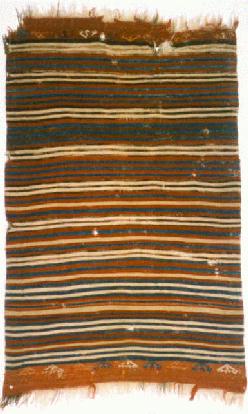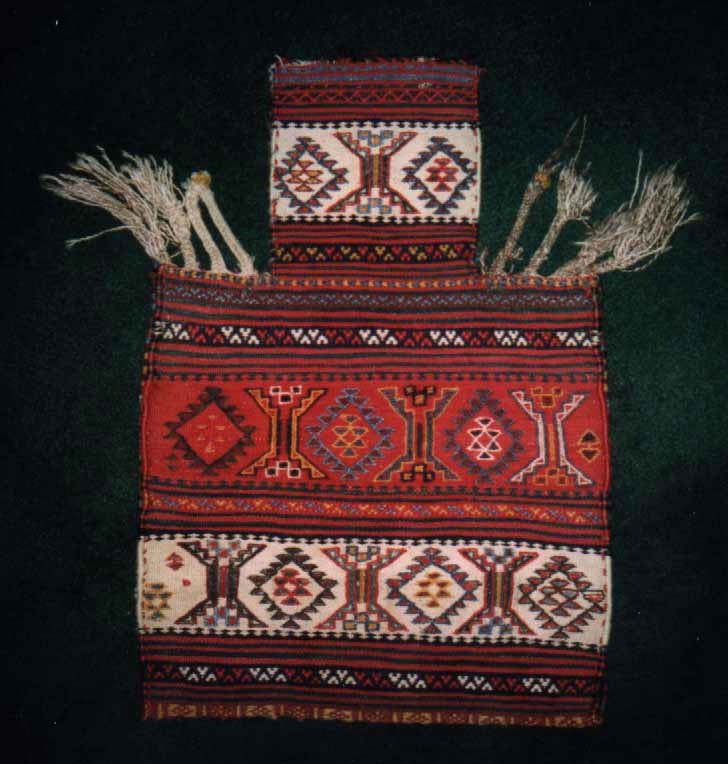As Steve has suggested most of us treat bag backs are a minor aspect of a bag and in truth many backs of bags are uninteresting. It is a rare Turkmen pile bag that has an interesting back.
I think, though, that I can claim to have at least in one instance paid due attention to one bag back. This is a textile that I bought on pure impulse, not knowing at all what it was purely, on the basis of its colors (this digital photo, the only one I have currently, does not due them justice) and the simplicity of its design which varies just enough for me to avoid the mechanical boredom that such pieces can exhibit.

I tried to research it and its pattern and colors resemble some Shahsavan kilims [See Hull and Luczyc-Wyhowska's "Kilim," page 198, plate 387 but is obviously not of this sort (among other things my piece is a single whole weaving not divided in two as the Shahsavan piece is, and my piece is quite small, measuring 27 X 43 inches). My piece is woven with a weft-faced plain weave on mostly white wool warps although some are dark brown and others are a brown and white combination. The weft material appears to be unplied.]
I still do not know anything very specific about it. The consensus though is that it is Turkish, (unplied wefts are seen to be characteristic of Turkish flatweaves) perhaps the back of a grain bag from Western Turkey.
I think I can claim to have paid at least once due attention to a bag's back, since it has a place of honor in my house and I still do not know what the front might look like.
I would be interested in any further thoughts or information anyone might have about this piece.
Regards,
R. John Howe
